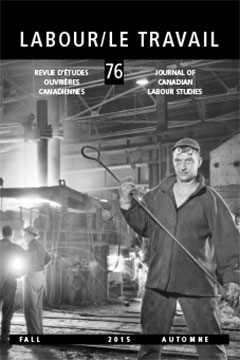Union Democracy as a Foundation for a Participatory Society: A Theoretical Elaboration and Historical Example
Published 2015-11-09
How to Cite
Abstract
This essay argues that union democracy (in the sense of active direct democracy at local levels in combination with highly accountable representative systems at more general levels) can be an important foundation for efforts to build a participatory society. It establishes, through a literature review, that pessimism about the capacity of unions to be functioning democracies is overstated; and then offers corrections for three weaknesses in the classical theory of participatory democracy. The first weakness – failing to analyze how participatory processes are gendered, racialized, and sexualized – is overcome by drawing upon feminist ideas for creating highly inclusive group processes. The second weakness – believing that an exaggerated consensus can be created through participation – is remedied with insights drawn from agonistic pluralism. The third weakness – assuming that participation in workplace governance is the essential, participatory training ground – is corrected with insights drawn from research on deliberative democracy. After enumerating eight reasons to pick unions as a focus for participatory efforts from amongst the various alternatives, the essay concludes with a historical example of how the combination of direct democracy and representative democratic accountability in the five United Mine Workers of America locals in the Crowsnest Pass, Canada, in the mid-20th century “spilled over” into this regional coalfield society, thereby nurturing a fledgling participatory society.
Cet article soutient que la démocratie syndicale (dans le sens d’une démocratie directe dynamique aux niveaux locaux en conjonction avec un système représentatif très comptable aux niveaux plus généraux) peut être une base importante pour les efforts de construire une société participative. L’article établit, par une analyse de la littérature, que le pessimisme à propos de la capacité des syndicats d’être démocraties efficaces est exagéré; par la suite, il propose des corrections par rapport à trois faiblesses dans la théorie classique de la démocratie participative. La première faiblesse – le manque d’analyse relative aux dimensions sexospécifiques, racialisées et sexualisées des processus participatifs – est réglée en tirant des idées féministes pour la création de procédés de groupe vraiment inclusifs. La deuxième faiblesse – la conviction qu’un consensus global entraîne de la participation – est résolue avec des connaissances tirées du pluralisme agonistique. La troisième faiblesse – la supposition que la participation au sein de la gouvernance en milieu de travail est le lieu essentiel de formation participative – est corrigée par des aperçus de la recherche sur la démocratie délibérative. Après avoir énuméré huit raisons d’axer sur les syndicats, parmi les différentes alternatives, comme centre des efforts participatifs, l’article conclut avec un exemple historique de la manière dont la combinaison de démocratie directe et de responsabilité démocratique représentative dans les cinq locaux du syndicat United Mine Workers of America dans le Crowsnest Pass, Canada, au milieu du XXe siècle à touché cette société régionale de bassin houiller, encourageant ainsi une société participative naissante.
